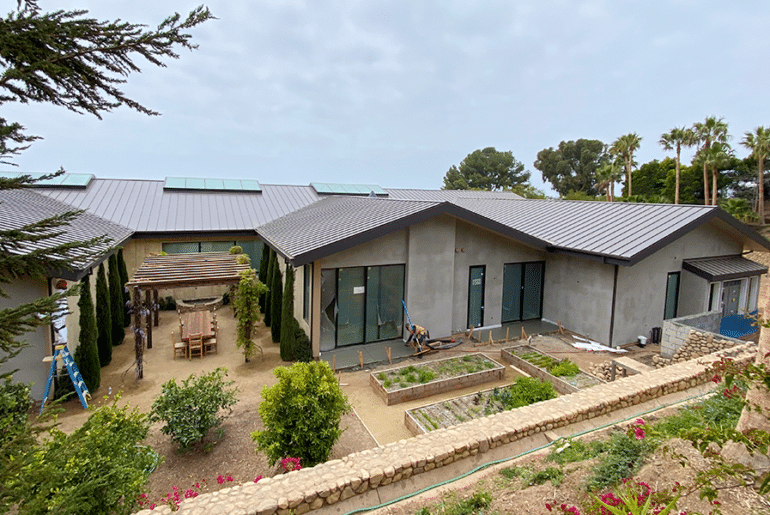With the recently launched International Living Future Institute (ILFI) Zero Carbon Certification (ZCC) – the first third-party certified Zero Carbon global standard – achieving and verifying Net Zero Carbon performance is now within reach. If you’re as stoked about this performance-based certification as we are, you’ve probably already dove into the standard, but might be struggling with next steps.
While the ILFI has outlined general requirements that must be met before certifying a project as Zero Carbon, the specific actions needed to design, build, and certify such a project may seem sparse compared to long-established and more prescriptive frameworks like USGBC’s LEED and IWBI’s WELL Building Standard.
Here, learn what specific actions will help you meet ZCC requirements at each stage in your project timeline, addressing both embodied carbon and operational carbon.
TIMELINE OF ACTIONS TO MEET ILFI ZCC REQUIREMENTS
DESIGN
Embodied Carbon Actions:
As early as concept design, engage an LCA (life-cycle assessment) consultant to develop a baseline embodied carbon model. This will help identify embodied carbon “hot spots” and guide the design towards reduced embodied carbon.
Refine and update the model throughout design, ensuring that the project achieves a 10% reduction over the baseline and an overall embodied carbon efficiency (<46.5 kg-CO2e/ft2).
Operational Carbon Actions:
To tackle operational carbon, start with early energy modeling in the design phase. By using detailed, sub hourly energy modeling results to predict the energy consumption of the proposed design, your project team can optimize building performance. This will also result in a building energy analysis report that details suggestions related to sizing of on-site renewable energy production and optimization of system design for envelope, HVAC systems, and other energy related systems. Note that the ZCC certification also allows for off-site renewables if they meet certain requirements.
Engage a whole building commissioning (Cx) authority to ensure that all the early design items, such as the Owner’s Project Requirements (OPR) and Basis of Design (BOD), are well-defined and that the drawings are reviewed, ensuring clarity and completion. Additionally, submittals should be reviewed to ensure the purchased equipment is meeting the design intent. The Cx process will help ensure that the Net Zero Energy goal will be maintained throughout the project’s life-cycle.
CONSTRUCTION
Embodied Carbon Actions:
Update the embodied carbon model based on any changes that occurred throughout construction.
Operational Carbon Actions:
While whole building Cx begins in the design phase, the majority of the Cx action comes during construction. This includes site visits and testing to verify that the project is meeting net zero requirements by ensuring all building systems, from HVAC to lighting and controls, are operating as efficiently as possible.
OCCUPANCY
Embodied Carbon Actions:
Once construction is complete, purchase carbon offsets based on the final embodied carbon model. Use these seven criteria to help guide your carbon offsets purchasing decisions.
Tip: Sustainably-sourced wood (certified by an organization such as FSC) sequesters carbon and can help negate any carbon offsets that must be purchased.
Operational Carbon Actions:
In occupancy, performance verification, such as measurement and verification (M&V) or Monitoring-Based Commissioning (MBCx), takes the reins to ensure that the installed energy systems perform according to their design. Here, operational issues that may cause inefficient system performance are diagnosed through analysis of the sensor trend data collected from the building management systems (BMSs). The identified issues are then corrected to achieve the optimized design performance. Energy consumption and solar production values are tracked to verify the Net Zero Energy performance of the building.
After 12 months of occupancy, performance verification demonstrates that your project performed as designed to Net Zero Energy standards and met the required efficiency standards.
READY TO GET TO ZERO?
By incorporating these actions into the design, construction, and occupancy phases, your project will be on its way to achieving the new gold standard of sustainable real estate: zero carbon emissions.
To learn more about the ILFI Zero Carbon Certification or discuss how to get your project to zero, reach out to our team. We’d love to talk! (Really, we love this stuff…)



